This creamy, protein-packed Fava Bean Hummus combines tender favas, fresh lemon, and creamy tahini for a delightful twist on the classic. Perfect for spreading on sandwiches or serving with crunchy veggies, it's a must-try for any hummus lover!
If you like easy hummus recipes, check out my hummus without garlic or the pink beet hummus.
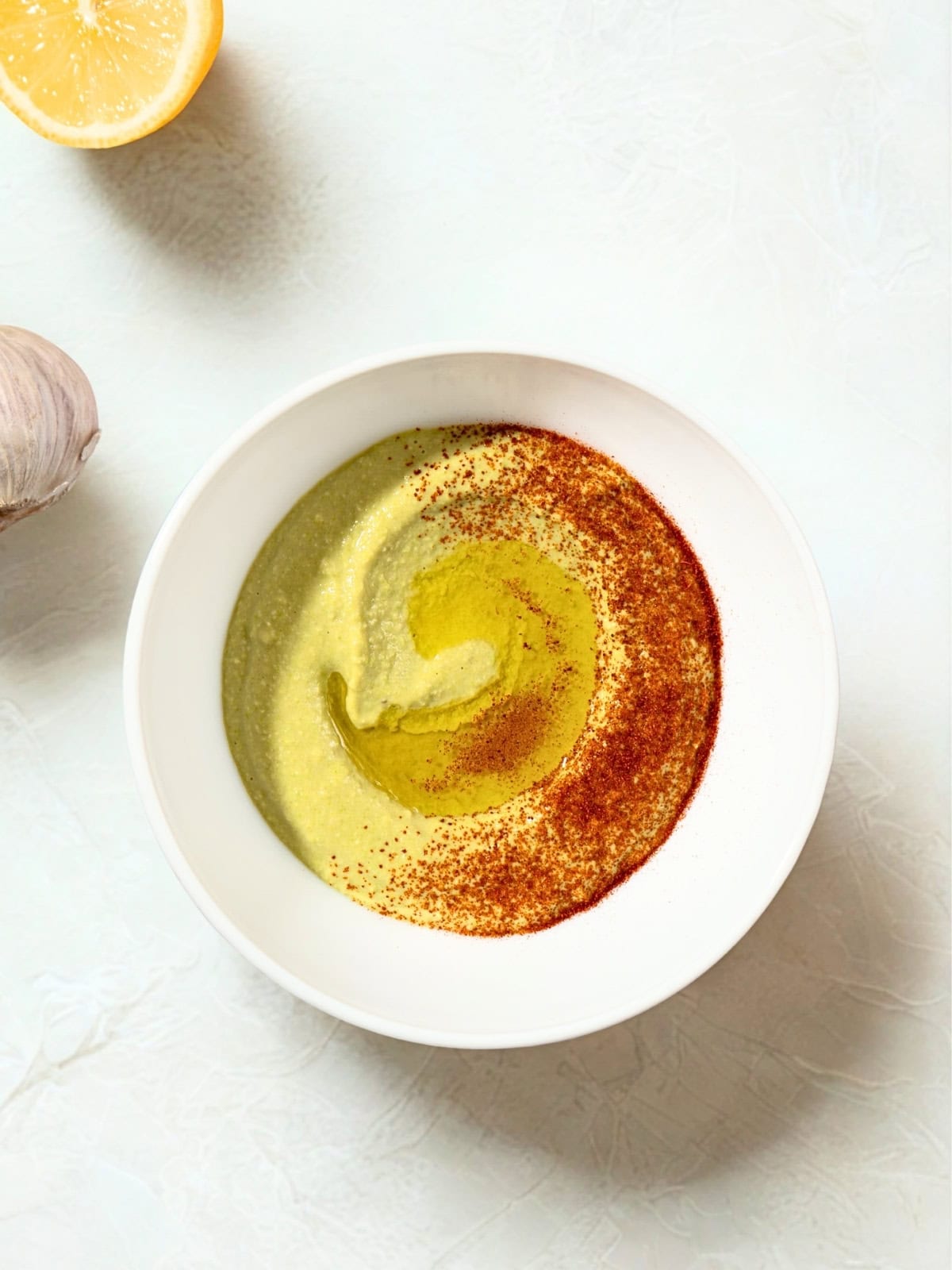
Jump to:
✔️ Why This Recipe is Great
Low Histamine Dip: with a seed butter at the base, this is a great vegan-friendly option for topping root veggies, salads, or even your favorite type of meat. Much like the other low histamine sauces on the site, this fresh broad bean hummus is versatile enough to be used as a dip, sauce, or smear for your favorite low histamine bread.
Vegan Protein: legumes and beans are all great sources of plant-based protein, and this fava hummus packs it in as balanced as possible with tahini for a Mediterranean-tinted spread that's a bit different from the usual go-to lentil stew or fava bean salad.
Springtime Produce: though pretty much all of the chickpeas we eat in the US are initially dried or canned, fava beans can be found fresh in the US and Europe in the springtime (April to June) and are such a treat to both eat and prepare. Spring also happens to be an abundant time for local lemons in California, and fresh garlic all across the States.
🧄 Ingredients
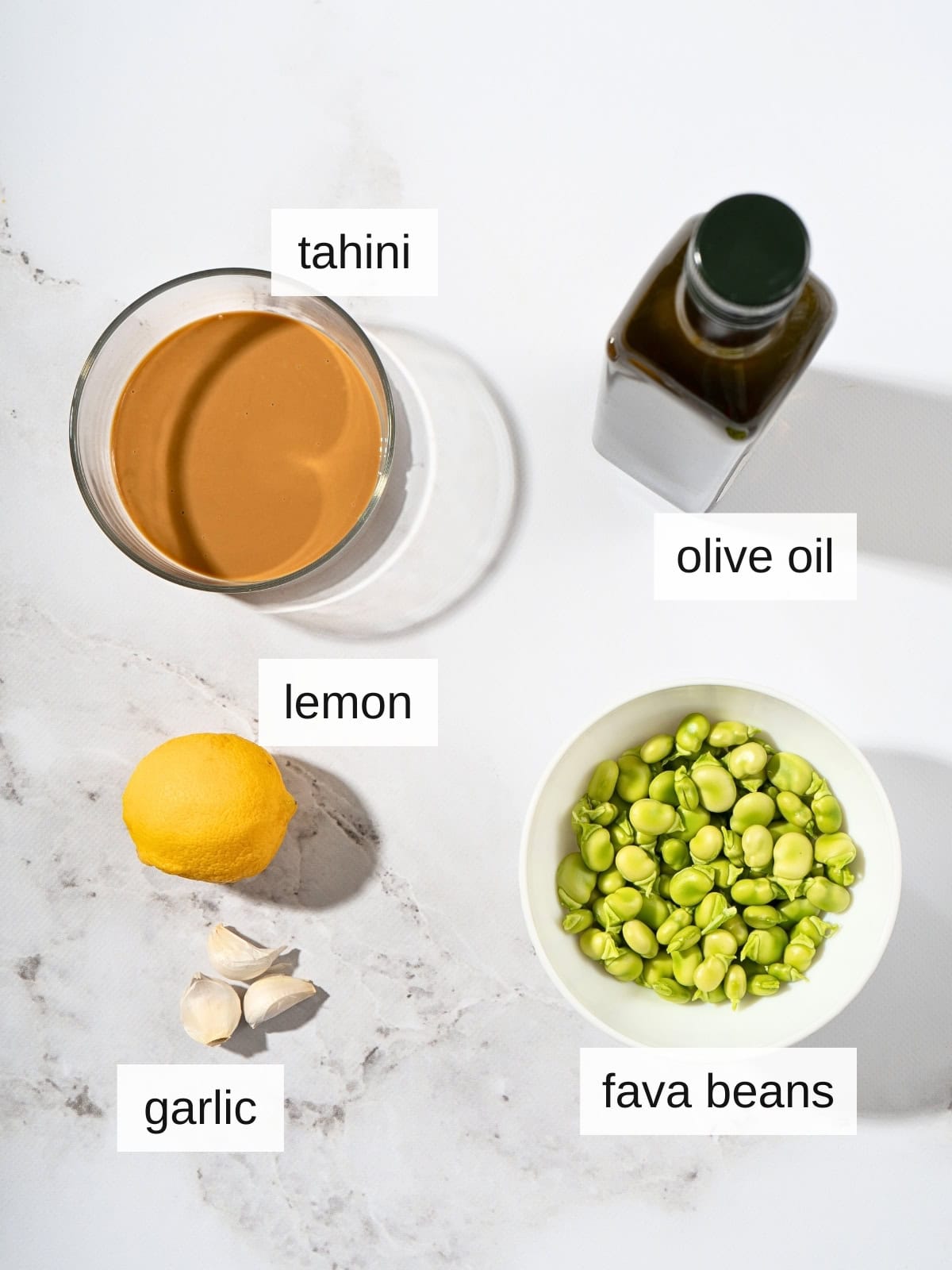
Fava Beans: also known as broad beans, these flavorful beans can be found fresh in the springtime at both Farmers Markets and a lot of organic markets. In the US they're grown heavily in Massachsetts, but you can also substitute broad beans for equal amounts of any white bean such as cannelini or borlotti.
Olive OIl: I used a fresh extra-virgin olive oil here, though you could alternately use the same amount of any oil you like (though something like flax oil might be too strong).
Tahini: another word for hulled, toasted, and ground sesame seeds, tahini has long been used in Mediterranean cuisine to make sauces and even low histamine desserts.
Lemon Juice: the kick of acid from the lemon juice really accentuates the complexity of each herb's flavor, without adding too much flavor of its own. Additionally, lemon contains loads of vitamin C, a known mast cell stabilizer, though some people are sensitive to citrus-derived forms of it.
Fresh Garlic: this adds a bite of umami and sharp, almost sourness to the creamy fava bean dip, as well as strongly antibacterial properties. You can leave it out if needed.
See recipe card for exact ingredients and quantities.
📝 Substitutions and Variations
Oil - I use a fresh extra-virgin olive oil here, though you could alternately use the same amount of any oil you like or tolerate (though something like flax oil might be too strong).
Fava Beans - if you can't find dried, frozen, or fresh favas, you can substitute borlotti beans, great white beans (cannelini beans), or Lima beans for the favas.
Lemon Juice - alternatives include roughly half as much apple cider vinegar or white vinegar, as tolerated (adding a bit more by the half teaspoon until it's to your taste).
Check out this more classic garlic-free hummus recipe on my site for a twist on this bean dip!
🌿 How to Prepare Fresh Fava Beans

Fava beans - or broad beans - with their buttery texture and slightly nutty flavor, are a staple in many cuisines around the world, most notably Mediterranean cuisines. Preparing them for a hummus or a salad requires a bit of effort, but it's well worth it for the flavor and nutritional benefits they bring to the bowl.
Fresh fava beans come in large pods, like peas, and need to be shelled before use. The beans inside have an outer skin that can be tough and bitter, which is why it's also essential to remove it to enjoy the tender, sweet bean inside.
- To prepare fresh fava beans, start by removing them from their pods. This can be done by snapping off the tip of the pod and pulling down the seam to reveal the beans inside. Discard the shells.
- Once you have your shelled fava beans, it's crucial to par-cook them to eliminate any lectins, which can be hard to digest when beans are raw. Boil the beans in salted water for about 1 to 2 minutes, then quickly transfer them to an ice bath to stop the cooking process and preserve their bright green color.
- After they've cooled, you'll need to peel off the outer skin. My preferred way to peel fava beans is to pinch the skin to create a tear and then squeeze the bean out. Another method is to make a small incision with a knife on the edge of the skin and then pop the bean out.
Using fresh fava beans is great for hummus because they have a slightly sweeter taste and firmer texture than frozen ones. Frozen fava beans are already shelled & blanched, saving you time, but they can have a mushier texture and less vibrant flavor. Whether you choose fresh, frozen, or dried favas, individual broad beans need to be cooked and peeled before adding to your salad.
🥗 How to Make Hummus With Favas (Step-by-Step)
Step 1) Start by cooking your fava beans until they're nice and tender (soak dried beans overnight and cook for 45 minutes; cook frozen beans for 3-5 minutes, and cook fresh beans for just 1-2 minutes) (image 1). If you're using frozen or fresh fava beans, remember to de-shell and peel them first (image 2). This might take a bit of time, but trust me - it's worth it for that smooth texture.
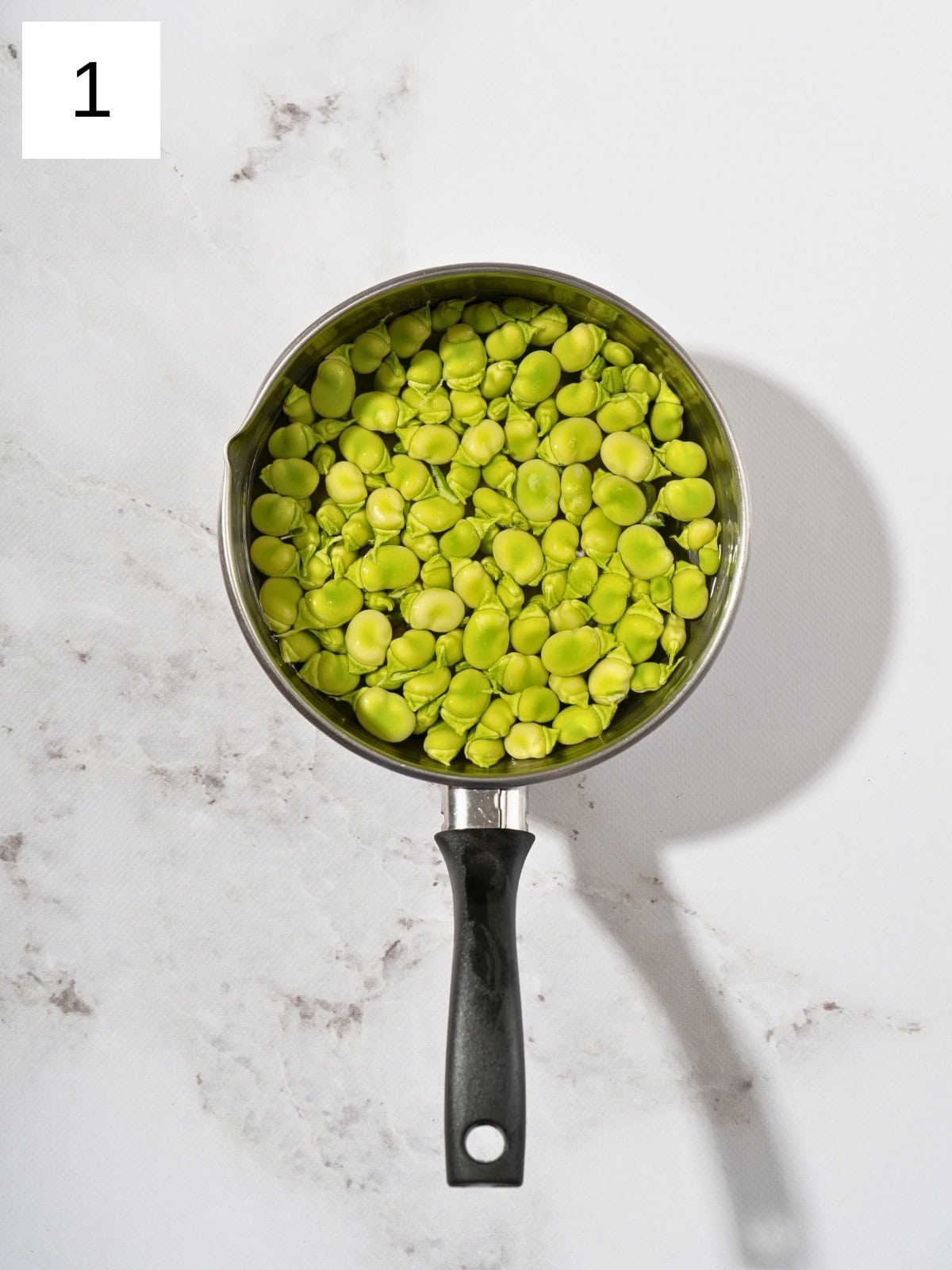
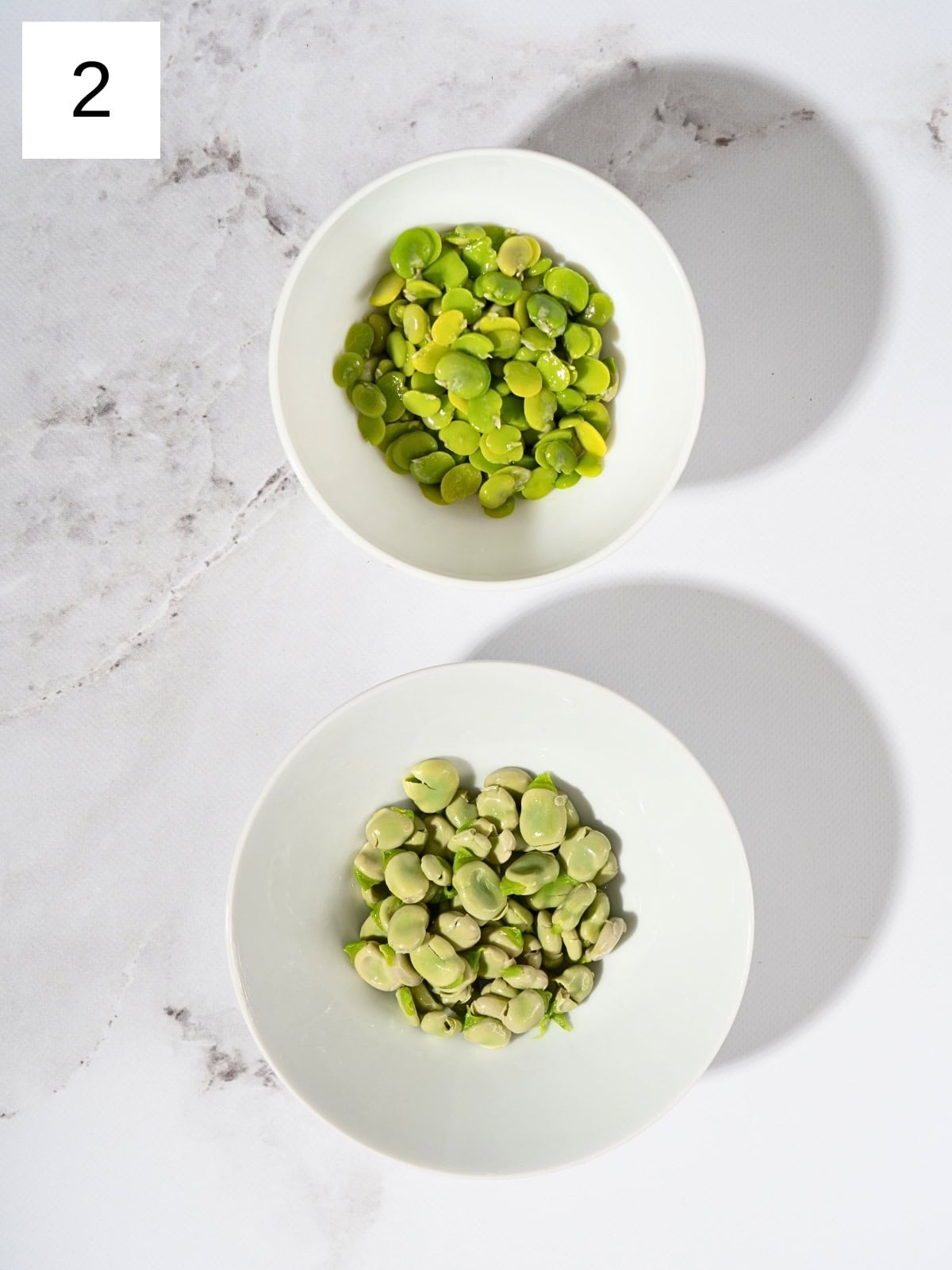
Step 2) Once your fava beans are cooked and cooled, toss them into a food processor along with all of the rest of the ingredients and blend everything together until you achieve a creamy, smooth consistency (image 3).
If the hummus is too thick for your liking, feel free to add a tablespoon or two of water or more olive oil to loosen it up.
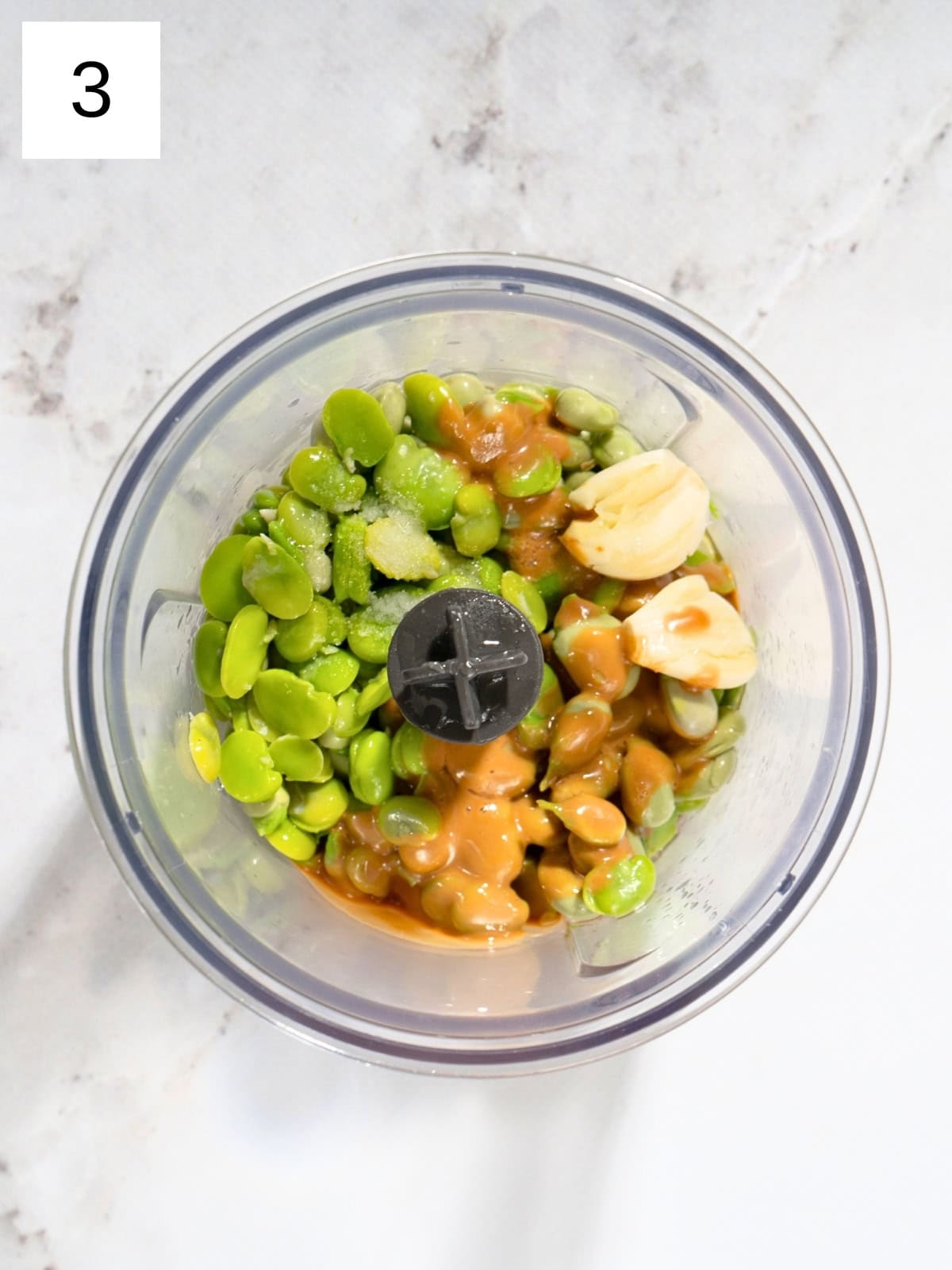
Step 3) Give your broad beans hummus a taste and adjust the seasoning if needed. Maybe a pinch more salt or a touch of sumac? It's all about making it perfect for your palate. Once it tastes great to you, transfer your dip to a serving bowl, drizzle with a bit of olive oil, and maybe a sprinkle of paprika or chopped fresh herbs for a pop of color, and enjoy (image 4).
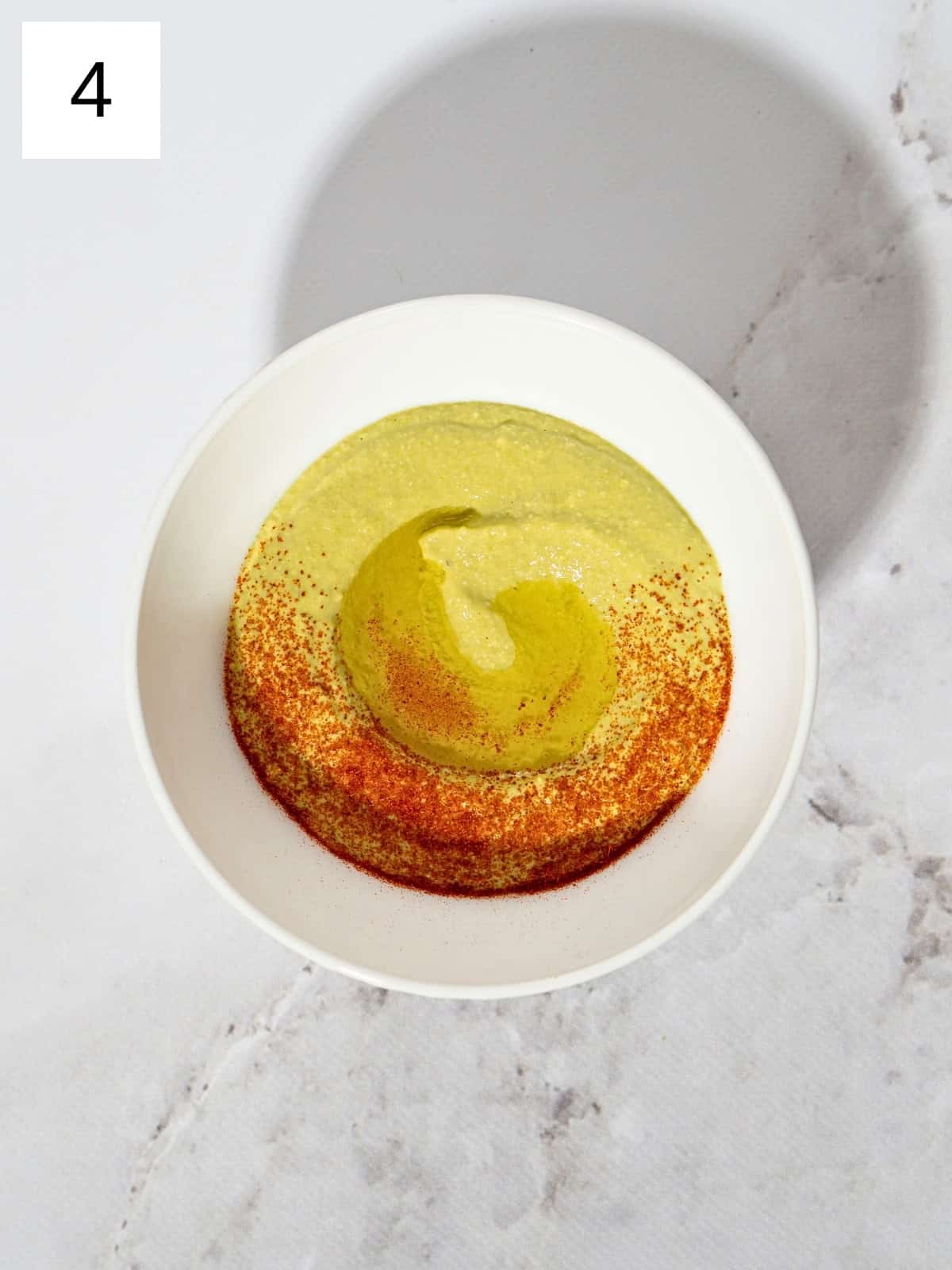
🥘 Freezing and Storage
If you're not on a low histamine diet, this fava beans hummus keeps well in the fridge for up to a week when stored in an air-tight container, so it's perfect for meal prep.
But if you want to freeze it, it can stay good in the freezer for up to 3 months, though the texture will get a bit denser the longer it's in there. Also note that it will get a bit grittier and watery, but this can be combatted by throwing it back in the blender or food processor and pulsing it until once again smooth.
👨🏻🍳 Expert Notes & Tips
Peeling Fresh Favas: Peeling fava beans might seem tedious, but it's the secret to the creamiest hummus with fava beans. Just pinch the skin and pop the bean out! You can even take 5 minutes to blanche your fresh favas, if you want to make it easier to peel them.
Adding Flavor: Want to spice things up? Add a dash of cumin, fresh herbs, or even blend in some roasted red peppers for a twist. To add some freshness you can also chop herbs like mint, cilantro and parsley and just add them on top of the hummus.
Serving Suggestions: When actually eating the hummus, dive in with your favorite veggies or pita chips, or spread it on a sandwich or wrap.
❓ Other Low Histamine Sauces
🙋 Frequently Asked Questions
Fava bean hummus has a rich, creamy, earthy flavor that's slightly nuttier and sweeter than traditional chickpea hummus.
Yes, fava bean hummus is very healthy. Fava beans are high in protein, fiber, and vitamins & minerals like folate, iron, and magnesium. When combined with heart-healthy olive oil and nutrient-rich tahini, this hummus becomes a nutritious snack option with a deep flavor.
Yes, you can substitute fava beans in traditional hummus recipes. Simply replace chickpeas with cooked fava beans and blend with the usual ingredients like tahini, olive oil, lemon juice, and garlic - much like in this recipe!
Fava bean hummus is suitable for most special diets. It is naturally vegan and gluten-free. It's also a good option for those following a Mediterranean diet or looking for high-protein, plant-based foods.
📖 Recipe

Fresh Fava Bean Hummus (Without Chickpeas)
Equipment
- 1 Food Processor
- 1 small pot
Ingredients
- 2 cups fresh or frozen shelled & peeled fava beans ~300g cooked until tender (about 3 ¼ pounds fresh favas in pods)
- 1 tablespoon olive oil
- ¼ cup tahini 60g
- 2-3 cloves garlic 9g, peeled & roughly chopped
- ¼ cup fresh lemon juice 60mL (1 to 1.5 lemons’ worth; alt. 2 tablespoons distilled white vinegar)
- ½ teaspoon salt
Instructions
- Start by cooking your fava beans until they're nice and tender (soak dried beans overnight and cook for 45 minutes; cook frozen beans for 3-5 minutes, and cook fresh beans for just 1-2 minutes). If you're using fresh fava beans, remember to de-shell and peel them first. This might take a bit of time, but trust me - it's worth it for that smooth texture.
- Once your fava beans are cooked and cooled, toss them into a food processor along with all of the rest of the ingredients and blend everything together until you achieve a creamy, smooth consistency. If the hummus is too thick for your liking, feel free to add a tablespoon or two of water or more olive oil to loosen it up.
- Give your fava bean hummus a taste and adjust the seasoning if needed. Maybe a pinch more salt or a touch of sumac? It's all about making it perfect for your palate.Transfer your dip to a serving bowl, drizzle with a bit of olive oil, and maybe a sprinkle of paprika or chopped fresh herbs for a pop of color, and enjoy.

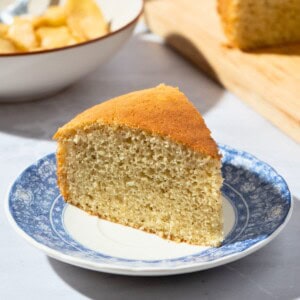











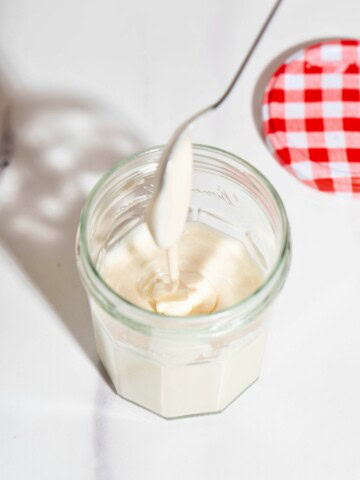

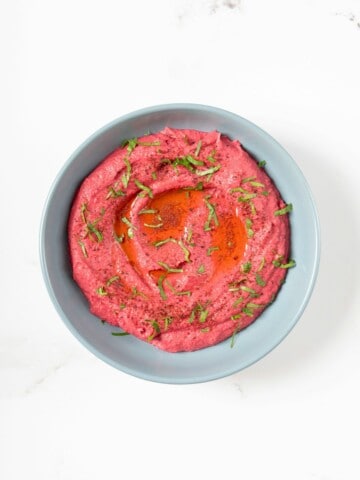
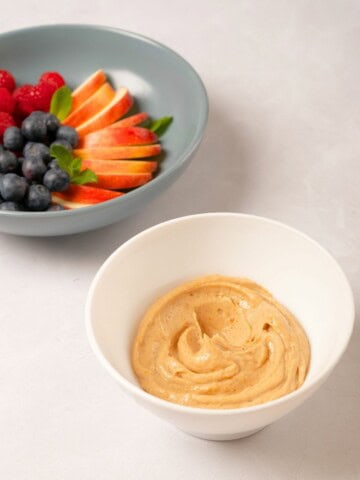

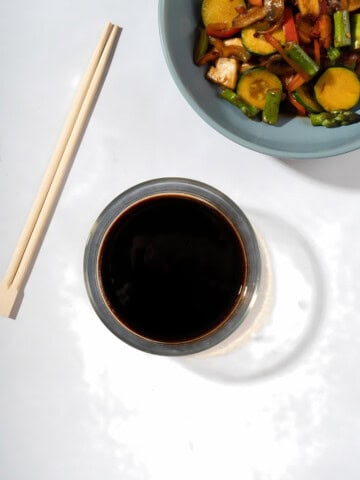


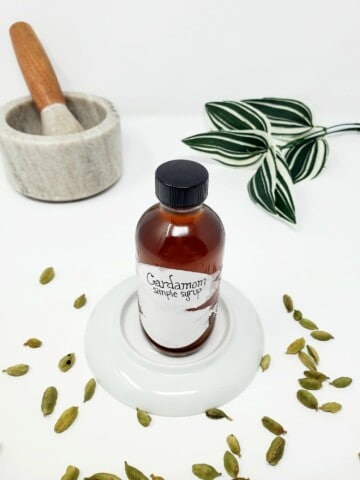
Comments
No Comments